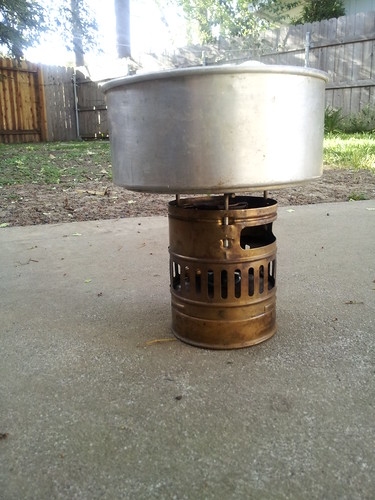Pretty good deal... for ONE DOLLAR!
For those of you that enjoy this kind of thing, here's the history of the Svea 123 from Wikipedia:
Svea stoves were first made by Nybergs Lödlampfabrik, which also manufactured blowtorches as well as other machinery and equipment. Founded by Carl Nyberg, the firm later became one of the largest industries inSundbyberg, Sweden. In 1922, the business was taken over by Max Sievert, an early associate of Nyberg’s, and renamed Sieverts Lödlampfabrik (later known as Sievert AB). The Svea 123, introduced in 1955, is considered to be the first compact backpacking white gas stove[1] and one of the most popular camping stoves ever made.[2]Its distinctive “roaring” sound has been likened to that of a jet engine at takeoff.[3] In 1969, the Svea brand was acquired by Optimus,[4] another Swedish manufacturer of portable stoves, which has continued production of the Svea 123 to the present day. Because of its simple design[5] and reputation for dependable performance,[6]even under extreme conditions,[7] the Svea 123 enjoys a devoted following.
The popularity of portable camping stoves such as the Svea coincided with the increase during the 1950s and 1960s in the awareness of the environmental impact of backpacking,[8] particularly in heavily-traveled areas,[9] and the rise of the Leave No Trace ethic in the 1970s and 1980s.[10] At the same time, scarcity of fuel in over-used camping areas as well as regulatory requirements (open-fire bans) also contributed to the need for a substitute for open campfires for "wilderness" area cooking.[11] Eventually stoves that were lighter in weight than the Svea, as well as those of other designs that were capable of burning a wider variety of fuels (useful when camping in other parts of the world where white gas is difficult to find) knocked it from its perch as one of the most popular backpacking stoves after nearly 50 years of production.[12]However, the rugged and durable Svea 123—often described by long-time users as "bomb-proof"[13] -- still remains popular and continues in wide use.[14]

No comments:
Post a Comment